Table Of Content
- Essential Winter Camping Safety Gear
- Stay Safe and Warm with the Right Equipment
- Protecting Yourself from Extreme Cold
- Ensuring Your Safety in Freezing Conditions
- Staying Prepared for Emergencies
- Conclusion
- Preparing Your Campsite for Extreme Cold
- Protective Measures for Your Campsite
- Setting Up Your Shelter
- Fire Safety in Cold Weather
- Layering Clothing for Cold Weather Camping
- Dress in Layers
- Choose the Right Materials
- Adjust Based on Activity Level
- Don’t Forget Accessories
- Maintain Dryness
- Building a Proper Shelter in Winter Conditions
- Gather Your Materials
- Choose a Strategic Location
- Build a Snow Cave or Quinzhee
- Construct a Lean-To Shelter
- Fire Safety Tips for Winter Campers
- Why is fire safety paramount in winter camping?
- Essential Fire Safety Tips for Winter Campers
- Common Mistakes to Avoid
- Remember, in the frigid wilderness, fire is your lifeline.
- Managing Hydration and Nutrition in Cold Weather
- Hydration Tips
- Nutrition Strategies
- Recognizing and Treating Hypothermia
- Signs of Hypothermia
- Immediate Actions to Take
- But how do you know when it’s time to seek help?
- Avoiding Frostbite during Winter Camping
- Dress Appropriately
- Protect Exposed Skin
- Stay Dry
- Navigation and Emergency Signaling in Snowy Terrain
- Emergency Shelter Markings
- Utilizing Natural Navigation Clues
- Sleeping Strategies for Staying Warm at Night
- Snug as a Bug: Insulation is Key
- Ground Control: Insulating from Below
- Layer Up: Clothing for Sleep
- Winter Camping Safety Tips for Families
- Stay Dry, Stay Warm
- Communicate Clearly
- Pack Plenty of High-Energy Snacks
- Teach Fire Safety
- Frequently Asked Questions (FAQs)
Welcome, fellow outdoor enthusiasts and adventurers! As we embark on winter camping expeditions and embrace the raw beauty of nature during the colder months, it is crucial to prioritize our safety above all else. Extreme cold weather poses unique challenges that demand careful preparation and a thorough understanding of winter survival techniques. This guide will explore essential winter camping safety tips and cold-weather survival strategies to ensure a successful and secure outdoor experience.
When venturing into the wilderness during frigid temperatures, having the proper knowledge and gear can mean the difference between an unforgettable adventure and a potential emergency. From preventing frostbite and hypothermia to navigating snowy terrain and setting up a winter-ready campsite, our comprehensive tips will empower you to face the elements with confidence and resilience.
Winter survival requires a proactive approach and an adaptable mindset. You can enhance your chances of staying safe and warm in challenging conditions by honing your skills in fire building, shelter construction, and emergency signaling. Additionally, understanding how to interpret weather forecasts and respond to unexpected changes in climate is paramount for a successful winter camping trip.
As we delve into the depths of winter camping safety and extreme cold survival, remember that preparation and caution are your greatest allies in the face of nature’s icy embrace. Let us embrace the frosty wilderness with respect, awareness, and an unwavering commitment to our well-being. Stay tuned for invaluable insights and practical tips to elevate your winter camping experience to new heights!
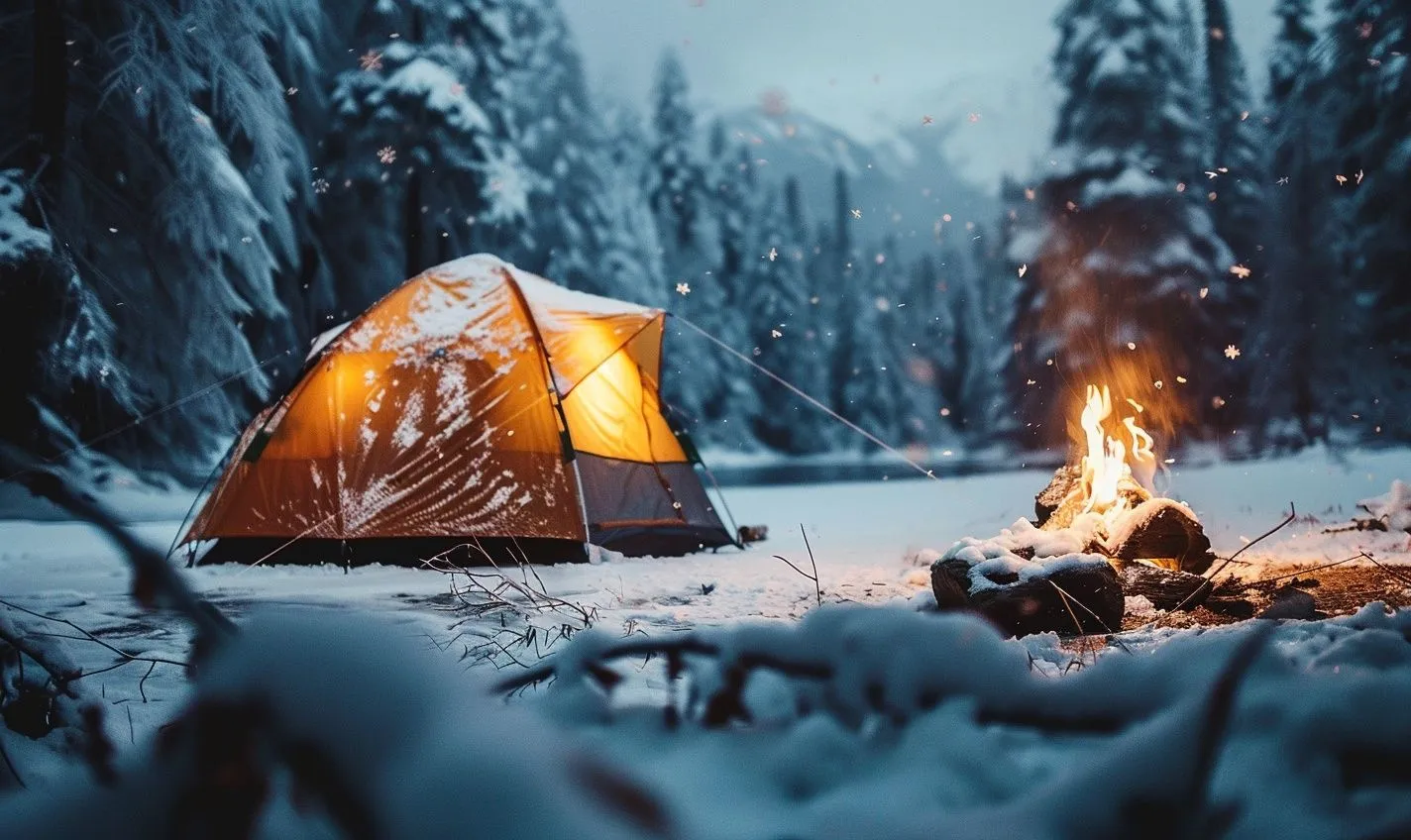
Essential Winter Camping Safety Gear
Stay Safe and Warm with the Right Equipment
Winter camping can be a thrilling adventure, but it also comes with its own set of challenges. As you prepare for your cold weather expedition, having the essential winter camping safety gear is crucial for your survival and comfort.
Protecting Yourself from Extreme Cold
When facing extreme cold conditions, your top priority is to keep warm and safe. Here are some winter survival tips to help you brave the icy temperatures:
- Insulated, waterproof tent
- Warm sleeping bag (rated for below-freezing temperatures)
- Thermal clothing layers
- Portable heater or heat source
Ensuring Your Safety in Freezing Conditions
Extreme cold survival requires careful planning and the right gear. Make sure to include these cold-weather camping essentials in your packing list:
- High-quality insulated boots
- Hand warmers and body heat packs
- Emergency blanket or bivvy sack
- Windproof and waterproof outer shell
Staying Prepared for Emergencies
Despite careful planning, emergencies can still happen. Equip yourself with the following winter camping safety items to stay prepared:
- First aid kit with cold weather medications
- Emergency communication device
- Multi-tool and repair kit
- Extra food and water supplies
Conclusion
With the right winter camping safety gear, you’ll be well-equipped to face the challenges of extreme cold and ensure a safe and enjoyable outdoor experience. So pack smart, stay warm, and confidently embrace the winter wonderland!
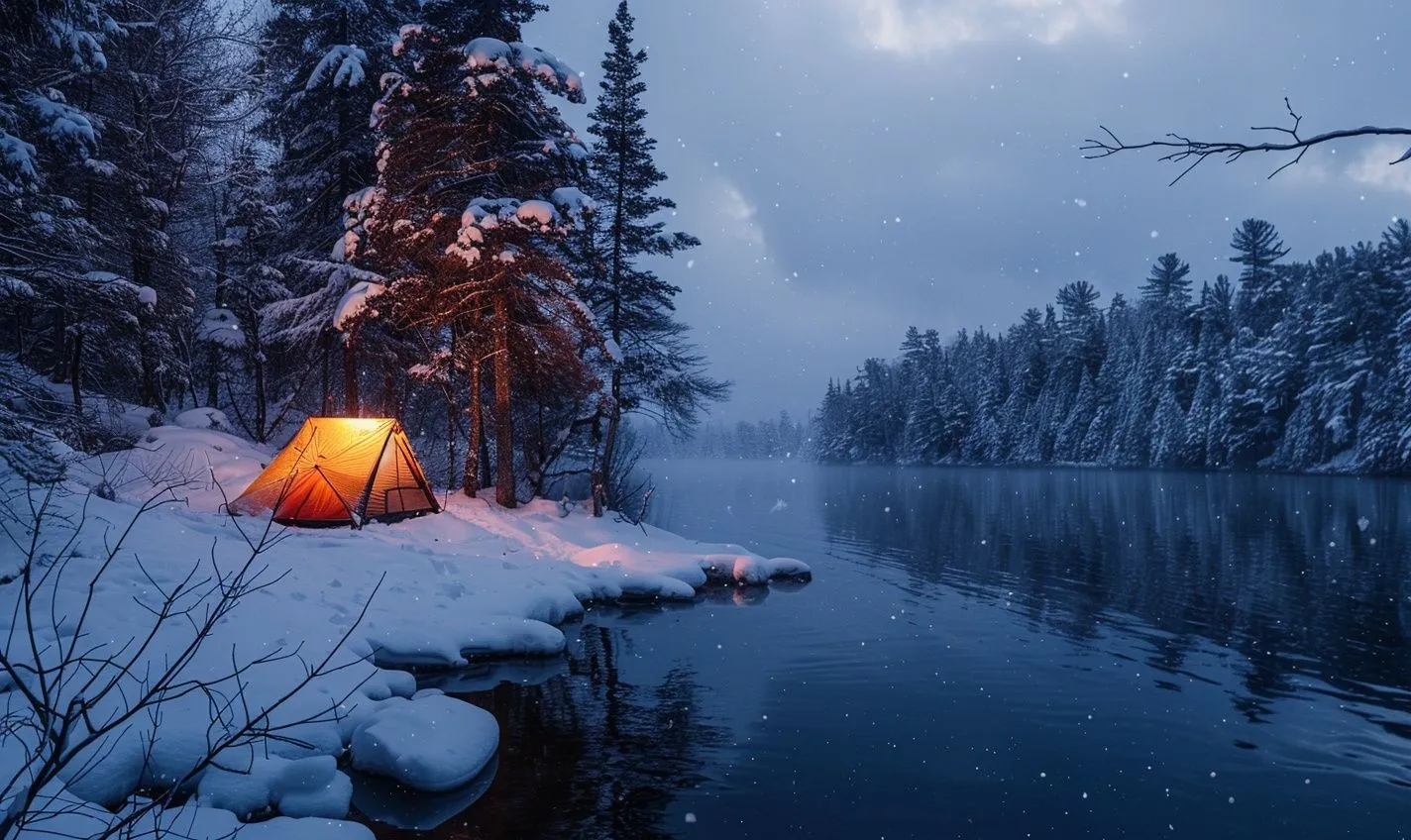
Preparing Your Campsite for Extreme Cold
The cold can present numerous challenges when embarking on a winter camping adventure. To ensure your safety and comfort, winter camping safety, extreme cold survival, and cold weather camping should be your top priorities as you prepare your campsite for sub-zero temperatures.
Protective Measures for Your Campsite:
Extreme cold requires extra precautions to keep yourself safe and warm:
- Locate a campsite sheltered from harsh winds to minimize wind chill effects.
- Clear the area of snow and ice to create a flat, stable surface for your tent.
- Inspect trees for loose branches that may fall due to heavy snow loads or high winds.
- Secure all gear and equipment to prevent them from blowing away in gusty conditions.
Setting Up Your Shelter:
Building a sturdy shelter is crucial for protection against the elements:
- Construct a windbreak using a tarp or snow blocks to shield your campsite from icy blasts.
- Set up a tent with a robust frame to withstand snow accumulation and strong winds.
- Layer the floor of your tent with insulating pads to provide a barrier against the cold ground.
Fire Safety in Cold Weather:
Keeping warm is essential in extreme cold, but fire safety is paramount:
- Select a safe area for your campfire away from flammable materials like dry leaves or overhanging branches.
- Use a fire ring or build a containment area with rocks to prevent the fire from spreading.
- Always have water or snow nearby to extinguish the fire before leaving your campsite.
Remember, winter survival tips are not just about braving the cold; they’re about enjoying the beauty of winter while staying safe. By taking the necessary precautions and adequately preparing your campsite, you can have a memorable winter camping experience without compromising your safety.
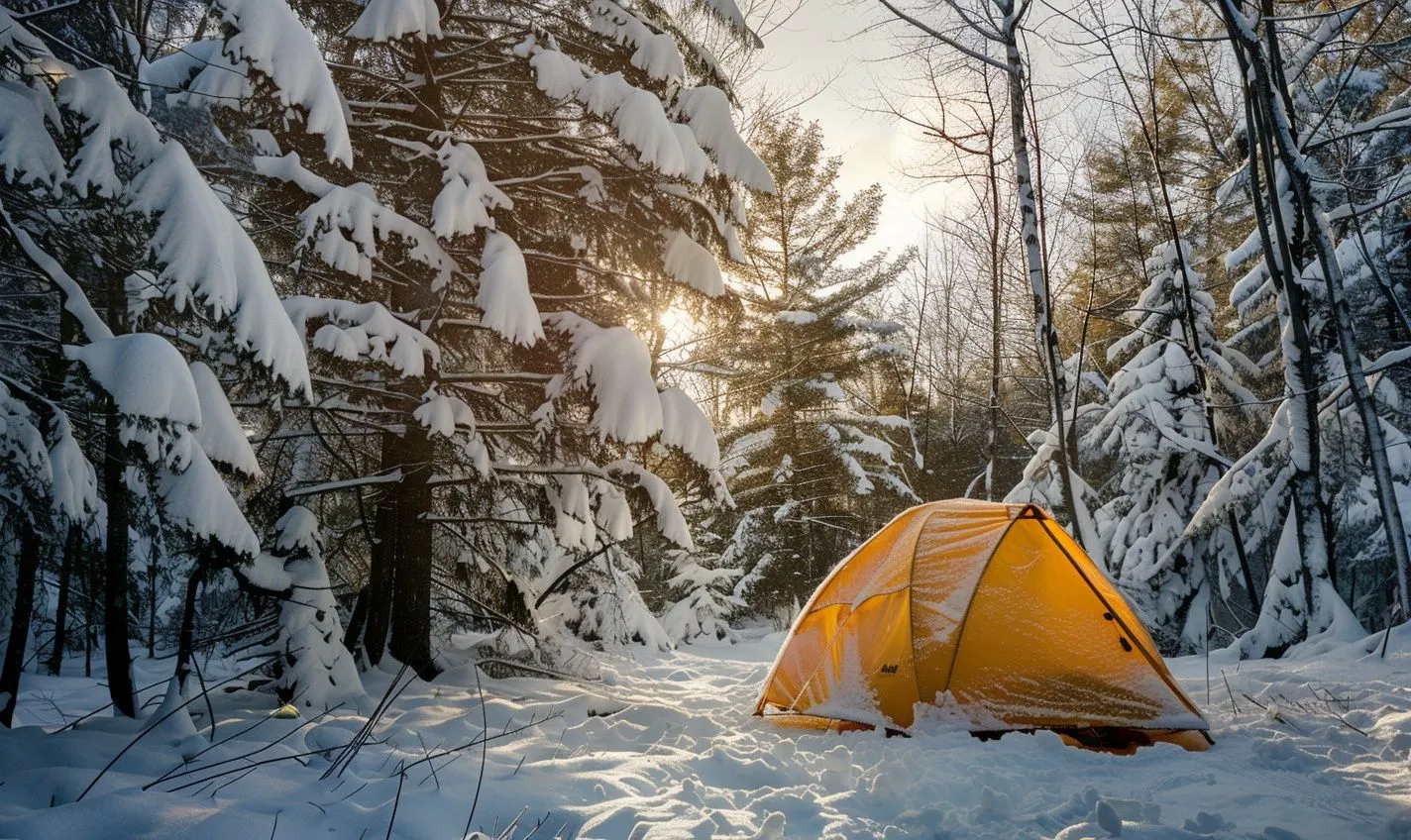
Layering Clothing for Cold Weather Camping
One crucial aspect of venturing into the great outdoors for a winter camping adventure is layering clothing for cold-weather camping. Proper layering can mean the difference between a comfortable experience and a dangerously cold one. Explore some essential tips for staying warm and safe in extreme cold.
Dress in Layers:
Layering your clothing efficiently is paramount in winter camping. Think of your attire as a sandwich – each layer serving a specific purpose, working together to keep you warm and dry.
– Base Layer: The layer closest to your skin should be moisture-wicking to keep sweat away.
– Insulating Layer: This layer traps heat, like a fluffy down jacket, to keep you warm.
– Shell Layer: The outermost layer should be windproof and waterproof to protect against the elements.
Choose the Right Materials:
Select clothing made from wool or synthetic fabrics that retain heat even when damp. Avoid cotton, as it loses insulation when wet, making you colder.
– Synthetic Fabrics: Lightweight and quick-drying, they are ideal for the base layer.
– Wool: A natural insulator that retains warmth even when wet, perfect for the insulating layer.
Adjust Based on Activity Level:
When engaging in physical activities, your body generates heat. To prevent overheating and sweating excessively, you may need to remove a layer temporarily.
– Unzip your jacket or remove your hat to release excess heat when hiking or chopping wood.
Don’t Forget Accessories:
In addition to layering your clothing, please pay attention to your extremities, as they are susceptible to frostbite in extreme cold.
– Headwear: Wear a warm beanie or balaclava to prevent heat loss from your head.
– Gloves: Invest in insulated, waterproof gloves to protect your hands from the cold.
– Footwear: Opt for moisture-wicking socks and waterproof boots to keep your feet warm and dry.
Maintain Dryness:
Remember, staying dry is critical in cold weather. Moisture from sweat can sap your body heat, so be diligent about changing into dry clothing if you start to sweat.
By mastering the art of layering clothing for cold-weather camping, you can ensure a safe and enjoyable outdoor experience, even in icy conditions.
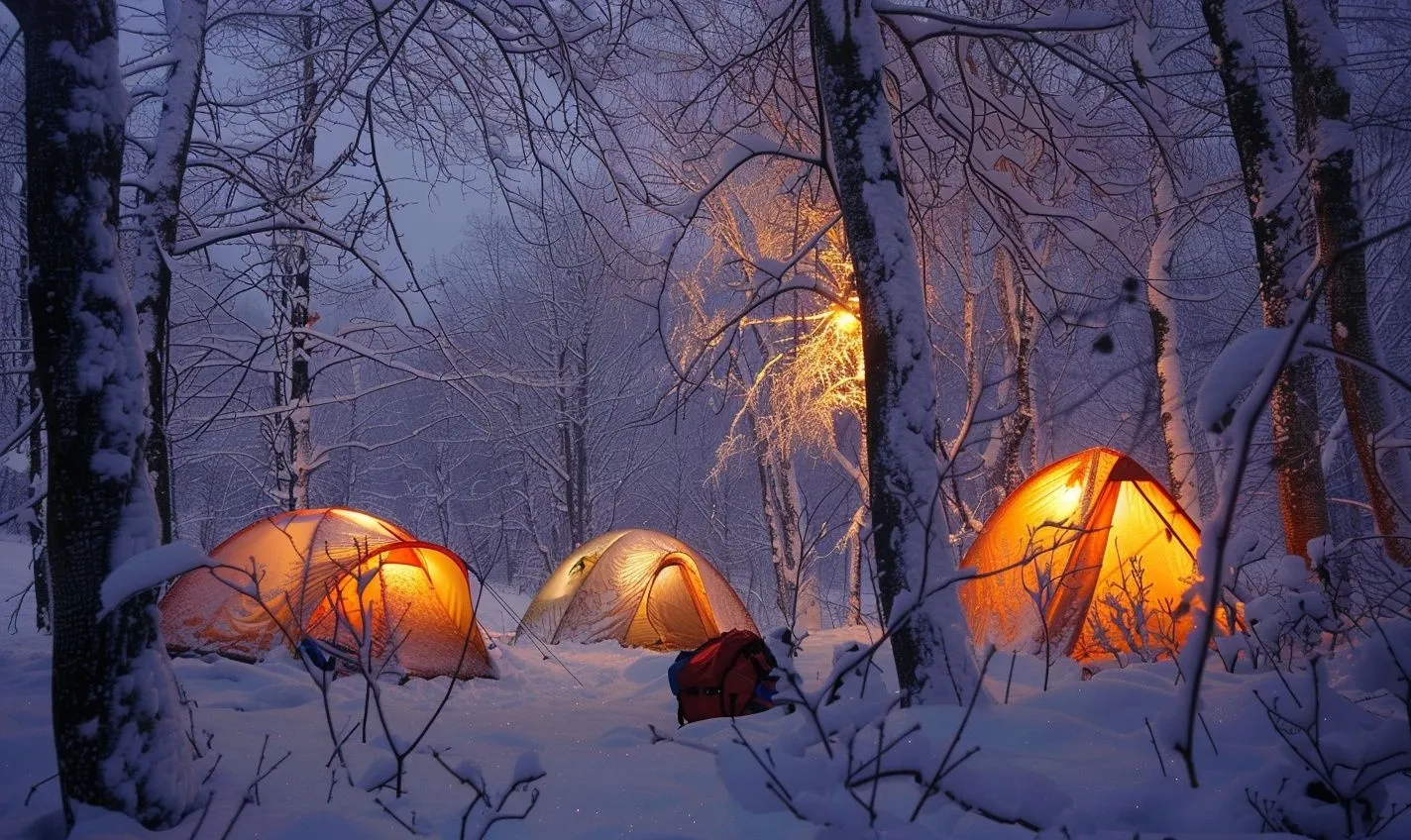
Building a Proper Shelter in Winter Conditions
When venturing into the icy realms of winter camping, having the proper shelter can be the difference between a cozy night under the stars and a dangerous situation. Building a sturdy shelter in extreme cold is a crucial skill every cold-weather camper should possess.
Gather Your Materials
Before starting on your shelter, gather all the necessary materials. You will need a tarp, tent, or survival blanket to protect you from the harsh elements. Collect branches, snow, and any available insulating materials to keep the cold at bay.
Choose a Strategic Location
Select a site that is sheltered from strong winds and potential avalanche areas. Ensure the ground is flat and free of rocks or debris that could disrupt your sleep. Location is critical to a good night’s rest in the winter wilderness.
Build a Snow Cave or Quinzhee
One effective winter shelter creation method is building a snow cave or quinzhee. These structures provide excellent insulation against the cold. Dig a hole in a snowbank, let the snow settle, and then create a small entrance for ventilation.
Construct a Lean-To Shelter
If snow isn’t available, a lean-to shelter can be a lifesaver. Use branches, leaves, and a tarp to create a sloping roof that shields you from snowfall and wind. Remember to angle your shelter to protect against prevailing winds.
Remember, in cold weather, a well-built shelter can mean survival. Take the time to construct a sturdy and reliable structure before darkness falls, ensuring you stay warm and safe throughout the long winter night.
Fire Safety Tips for Winter Campers
When venturing into the great outdoors during the chilly winter months, staying warm is not just about comfort—it’s about survival. Winter camping safety in extreme cold conditions requires careful planning and preparedness. One of the most crucial aspects of your survival toolkit is understanding fire safety in the wilderness.
Why is fire safety paramount in winter camping?
Extreme cold survival heavily relies on starting and maintaining a fire. A fire can mean the difference between life and death in freezing temperatures. It provides warmth, a means to melt snow for drinking water, and a signal for rescuers if needed.
Essential Fire Safety Tips for Winter Campers:
- Choose a safe spot for your campfire away from flammable materials.
- Clear the snow area and create a barrier using rocks or a fireproof base.
- Keep a bucket of water or snow nearby to douse the flames quickly.
- Never leave your fire unattended; ensure it is fully extinguished before sleeping.
Common Mistakes to Avoid:
- Building a fire that is too large and difficult to control.
- Flammable materials like tents or fuel are used to start or fuel the fire.
- Allowing the fire to spread beyond the designated fire ring.
Remember, in the frigid wilderness, fire is your lifeline.
Be vigilant and respectful of nature, and always prioritize cold-weather camping safety. Your ability to start a fire responsibly and keep it burning can mean the difference between a memorable adventure and a dangerous situation.
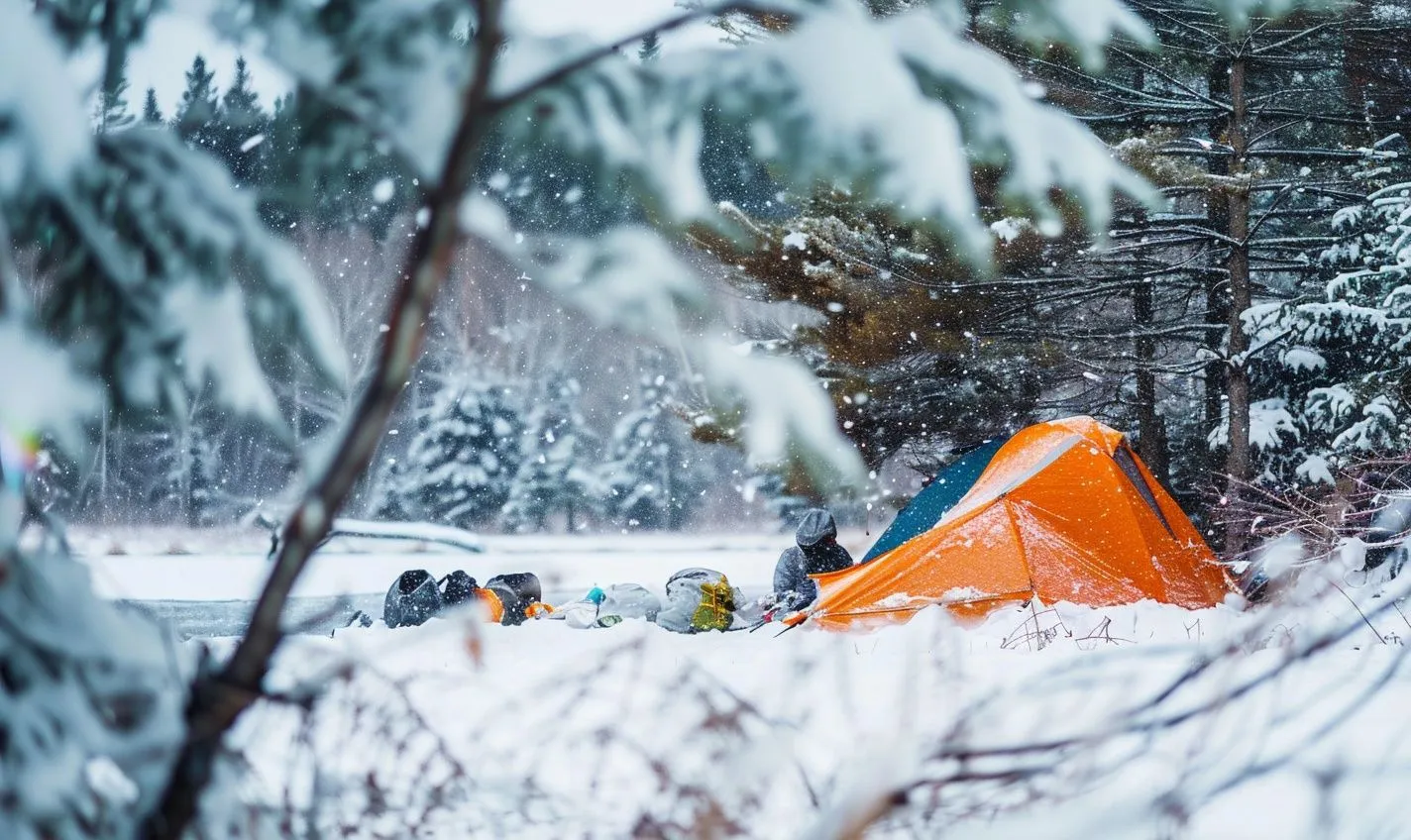
Managing Hydration and Nutrition in Cold Weather
When embarking on a winter camping adventure, staying hydrated and nourished is vital for maintaining energy, warmth, and overall well-being in extreme cold conditions. By effectively managing your hydration and nutrition, you can survive and thrive in the winter wilderness.
Hydration Tips:
Hydrating adequately in cold weather can be challenging but crucial. Here are some tips to help you stay well-hydrated during your winter camping trip:
- Drink small sips of water regularly throughout the day to prevent dehydration.
- Keep a thermos of warm beverages like herbal tea or electrolyte-rich drinks to maintain hydration and warmth.
- Avoid consuming alcohol, as it can dehydrate your body and increase the risk of hypothermia.
Nutrition Strategies:
Providing your body with the proper nutrients is essential for generating heat and sustaining energy in the cold. Consider the following nutrition strategies for winter camping:
- Consume high-energy foods like nuts, dried fruits, and energy bars to fuel your body throughout the day.
- Include hot meals in your camping menu to help regulate your body temperature and boost morale.
- Opt for complex carbohydrates and proteins to maintain lasting energy levels in the cold weather.
Remember: Just like a well-oiled machine, your body requires the right fuel and hydration to function optimally, especially in winter survival scenarios. By prioritizing your hydration and nutrition needs, you are equipping yourself with a safer, more enjoyable cold-weather camping experience.
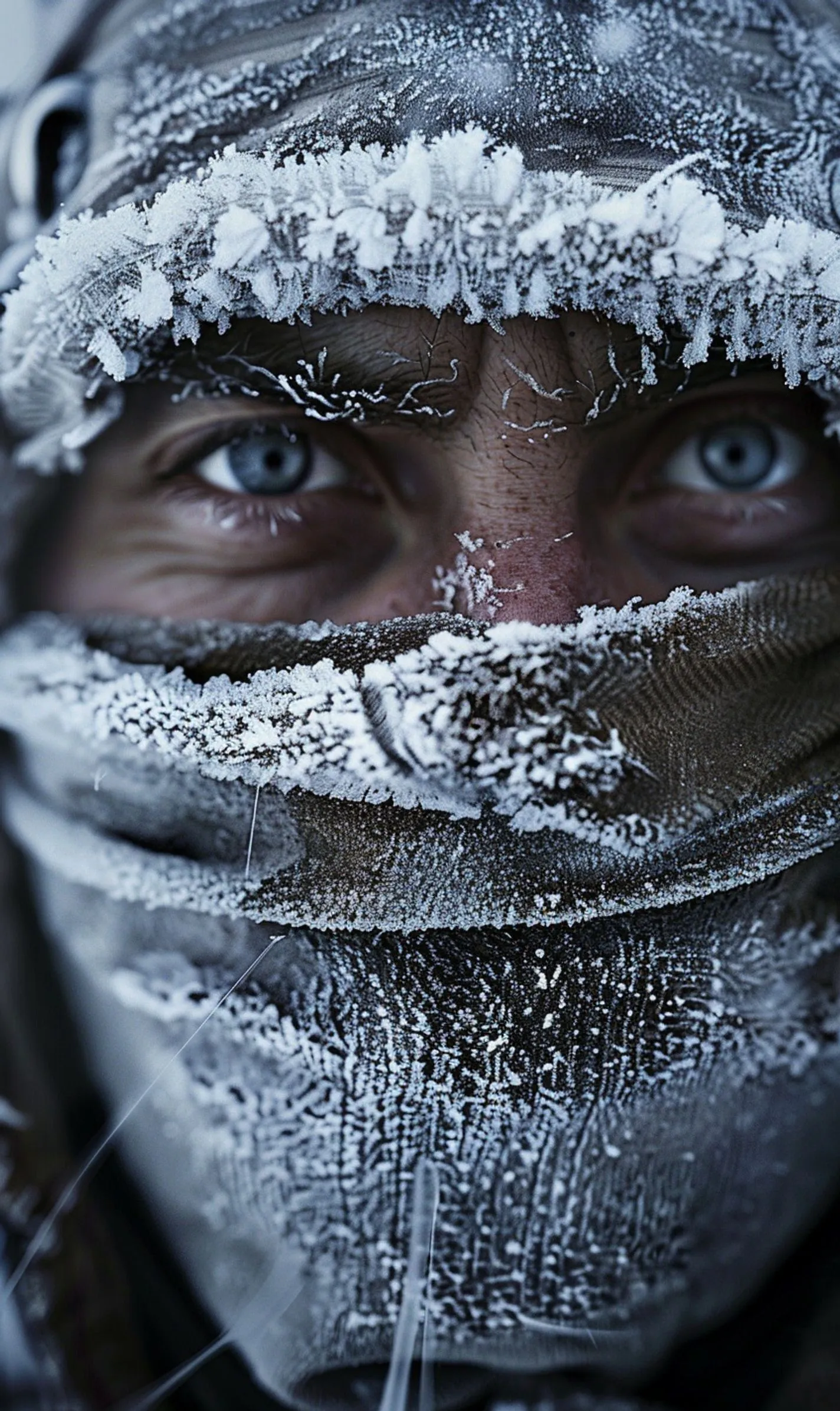

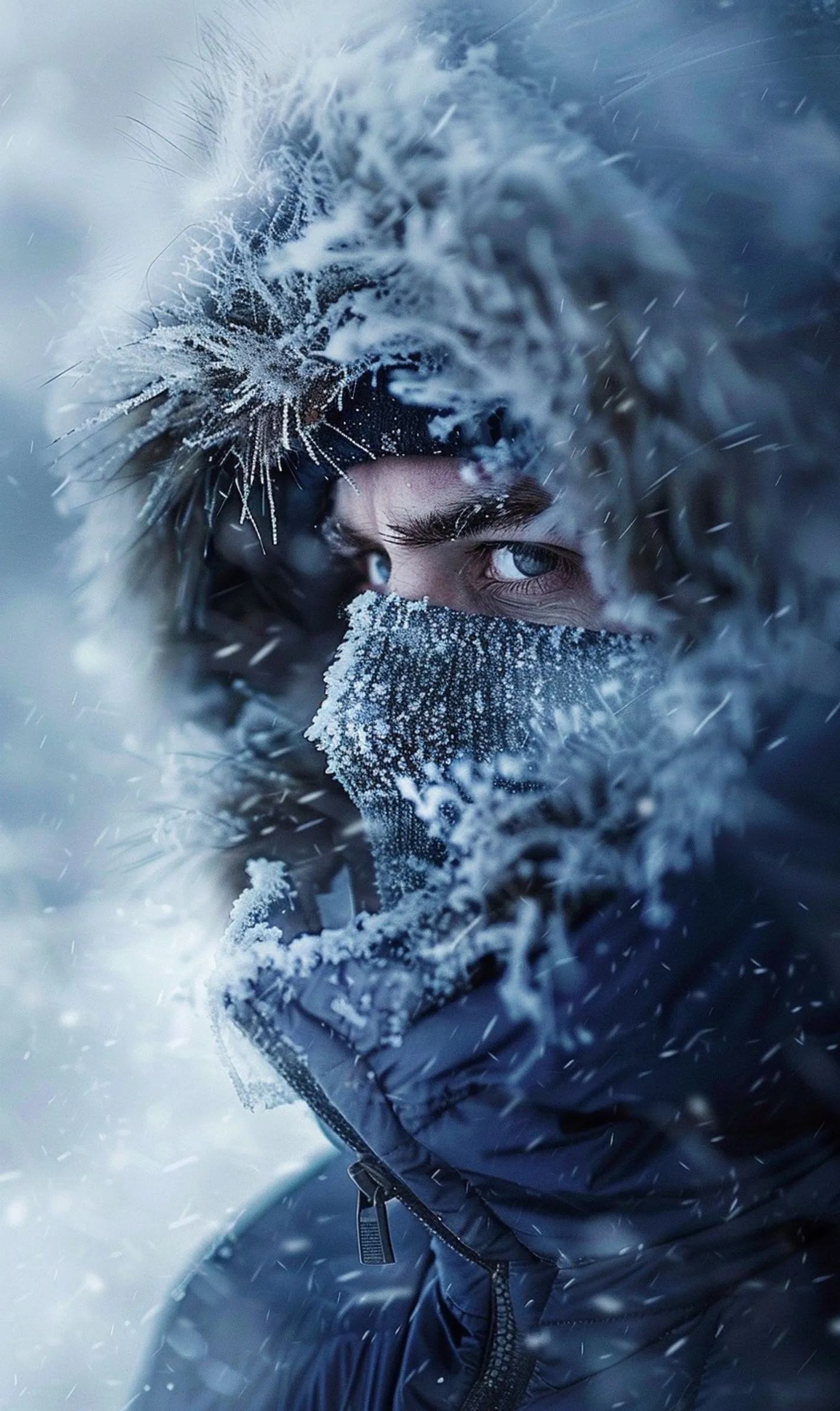
Recognizing and Treating Hypothermia
While winter camping can be thrilling, it poses risks, especially when dealing with extreme cold temperatures. One of the most severe threats you may encounter is hypothermia. This potentially life-threatening condition occurs when your body loses heat faster than it can produce heat, causing your core body temperature to drop below normal levels.
Signs of Hypothermia:
- Shivering uncontrollably
- Slurred speech and confusion
- Weakened pulse and shallow breathing
- Weakness and fatigue
Immediate Actions to Take:
- Move the person to a warm, dry place
- Remove any wet clothing and replace it with dry layers
- Wrap the person in blankets or sleeping bags to trap body heat
- Offer warm beverages but avoid alcohol or caffeine
Remember, hypothermia can happen even when the temperatures are above freezing, so it’s crucial to be vigilant and take preventative measures to protect yourself and your camping companions.
When exploring the great outdoors in frigid conditions, dress in layers and cover your head and extremities to prevent heat loss. Additionally, stay hydrated and consume high-energy foods to fuel your body’s internal heating system.
But how do you know when it’s time to seek help?
If you or someone in your group is exhibiting signs of severe hypothermia, such as loss of coordination, drowsiness, or unconsciousness, it’s imperative to call for emergency assistance immediately. Don’t hesitate to utilize any available resources like emergency beacons or signal flares to alert rescuers of your location.
Remember, staying safe in winter is all about being prepared, alert, and taking swift action when necessary. By arming yourself with the proper knowledge and gear, you can conquer the cold and enjoy a memorable camping experience that is both thrilling and safe.
Avoiding Frostbite during Winter Camping
When embarking on a winter camping adventure, the thrill of the icy landscapes and the serenity of the snow-covered wilderness can be truly captivating. However, amidst the beauty and tranquility of winter camping lurks the potential danger of extreme cold and the risk of frostbite. Here are some crucial tips to keep yourself safe and warm in the biting cold:
Dress Appropriately
Proper clothing is your first line of defense against frostbite. Ensure you have the following items:
- Insulated, waterproof boots
- Thick, moisture-wicking socks
- Multiple layers of clothing
- Waterproof outer shell
Protect Exposed Skin
Areas like your fingers, toes, nose, and ears are particularly vulnerable to frostbite. Make sure to:
- Wear gloves or mittens
- Use a scarf or face mask
- Wear a hat that covers your ears
Stay Dry
Moisture can accelerate heat loss from your body, increasing the risk of frostbite. Remember:
- Avoid sweating by adjusting your layers
- Keep spare clothing dry in case you need to change
In the harsh winter conditions, frostbite can sneak up on you without warning. By being vigilant, prepared, and well-equipped, you can enjoy the magic of winter camping while staying safe and warm.
Navigation and Emergency Signaling in Snowy Terrain
When you find yourself amid a snowy wilderness during your winter camping adventure, proper navigation skills and emergency signaling techniques become vital for your safety. The serene white landscape can easily disorient even the most seasoned campers, but you can confidently navigate through the snow-covered te with the proper knowledge and tools.
Trusting Your Compass and Map:
- Always carry a reliable compass and a detailed map of the area.
- Know how to orient yourself using the compass and identify key landmarks on the map.
- Stay aware of your surroundings and adjust your course as needed.
Creating Visible Signals:
- Use bright-colored fabrics or signal mirrors to create visible signals for potential rescuers.
- Arrange rocks or tree branches in a distinct pattern that can be easily spotted from afar.
- Consider carrying a whistle to create auditory signals in case of emergencies.
Emergency Shelter Markings:
But what if you need to leave your campsite for help or supplies? Leaving markings on your emergency shelter can guide rescuers to your location:
- Use brightly colored tape to mark the entrance of your shelter.
- Create significant, visible marks in the snow to indicate your direction.
- Leave a note inside the shelter with details on your whereabouts and intentions.
Utilizing Natural Navigation Clues:
And when conventional tools are not available, nature itself can guide you:
- Observe the direction of the sun to determine east and west during daytime.
- Follow animal tracks or patterns on trees to find potential paths.
Navigation and emergency signaling skills can be your lifeline in a snowy expanse. You can ensure a safe and memorable winter camping experience by staying prepared and mindful of your surroundings.
Sleeping Strategies for Staying Warm at Night
Crawling into your sleeping bag can be inviting and terrifying when the sun sets and the temperatures plummet. How can you ensure a cozy night’s sleep in the midst of extreme cold? Let’s explore some winter camping safety tips that focus on keeping warm through the night.
Snug as a Bug: Insulation is Key
Like a cozy blanket on a chilly evening, your sleeping bag is your best friend in the wilderness. Opt for a high-quality sleeping bag that is rated for extreme cold survival. Look for features like draft collars, hood cinches, and insulated zipper baffles to trap warmth inside.
Ground Control: Insulating from Below
Did you know the ground can sap your body heat away faster than the air? Invest in a thermal sleeping pad to provide an insulating barrier between you and the cold ground. This simple addition can make a world of difference in cold-weather camping.
Layer Up: Clothing for Sleep
While it may be tempting to strip down before snuggling into your sleeping bag, this can make you colder. Keep on a fresh set of winter survival tips: wear dry base layers and socks to bed to retain body heat throughout the night.
Remember, a good night’s sleep is crucial for your overall well-being and enjoyment of your winter camping adventure. By implementing these sleeping strategies for staying warm at night, you can rest easy knowing you’re prepared for whatever Mother Nature throws.
Winter Camping Safety Tips for Families
Embarking on a winter camping adventure with your loved ones can be a rewarding experience, but it’s crucial to prioritize safety when venturing into the cold, unpredictable outdoors. Here are some essential winter camping safety tips to ensure a memorable and secure trip for your family:
Stay Dry, Stay Warm
Properly layering clothing and ensuring everyone stays dry is vital. Wet clothes can quickly lead to hypothermia in extreme cold conditions.
Communicate Clearly
Establish a communication plan with your family members in case someone gets lost or separated—Pre-arrange meeting points and teach children how to use emergency devices.
Pack Plenty of High-Energy Snacks
Pack nutritious, high-calorie snacks like nuts, dried fruits, and granola bars to keep energy levels up. Proper nutrition is crucial for staying warm in cold weather.
Teach Fire Safety
Ensure everyone understands the importance of fire safety, especially in winter conditions. Teach children how to start and maintain a fire to keep warm safely.
Extreme cold survival requires preparation, communication, and a keen awareness of your surroundings. Following these cold-weather camping tips can create lasting memories while keeping your family safe in the winter wilderness.
Conclusion
As we wrap up our discussion on winter camping safety and cold weather survival tips, it’s crucial to remember that preparation is critical to an enjoyable and safe winter camping experience. Following the tips outlined in this guide, you can stay warm, dry, and secure, even in extreme cold conditions.
Always check the weather forecast before heading out, pack appropriate clothing and gear, and stay vigilant of signs of hypothermia and frostbite. Additionally, inform someone of your camping plans and expected return time to ensure help can be sent.
By being well-prepared and aware of your surroundings, you can fully embrace the beauty and serenity of winter camping without compromising your safety. The winter wilderness offers a unique and transformative experience for outdoor enthusiasts but demands respect and caution.
So, as you plan your next winter camping adventure, remember these safety tips and embrace the challenges and rewards of braving the cold. Stay warm, stay safe, and enjoy the magic of winter camping to the fullest!
Frequently Asked Questions (FAQs)
Q: What are some essential cold weather camping gear items for extreme cold survival?
A: Essential gear for winter camping includes a four-season tent, cold-weather sleeping bag, insulated sleeping pad, high-quality winter clothing, snowshoes or crampons, and a stove suitable for cold weather.
Q: How can I stay warm while camping in extreme cold during winter?
A: To stay warm, wear layers of clothing, use a high-quality sleeping bag rated for low temperatures, insulate yourself from the ground, eat high-calorie foods, and stay active to generate body heat.
Q: What are some winter survival tips for cold-weather camping?
A: Winter survival tips include staying dry, staying hydrated, building a snow shelter if needed, knowing how to start a fire in the snow, and keeping a close eye on weather conditions.
Q: How can I prevent hypothermia and frostbite while winter camping?
A: To prevent hypothermia and frostbite, dress in layers, keep dry, wear insulated and waterproof boots, gloves, and hats, and be aware of the warning signs of these cold-related conditions.
Q: What should I do if I get lost while winter camping in extreme cold?
A: If you get lost, stay calm, try to retrace your steps, use a map and compass or GPS if available, find a sheltered spot, make yourself visible to search parties, and if necessary, signal for help.







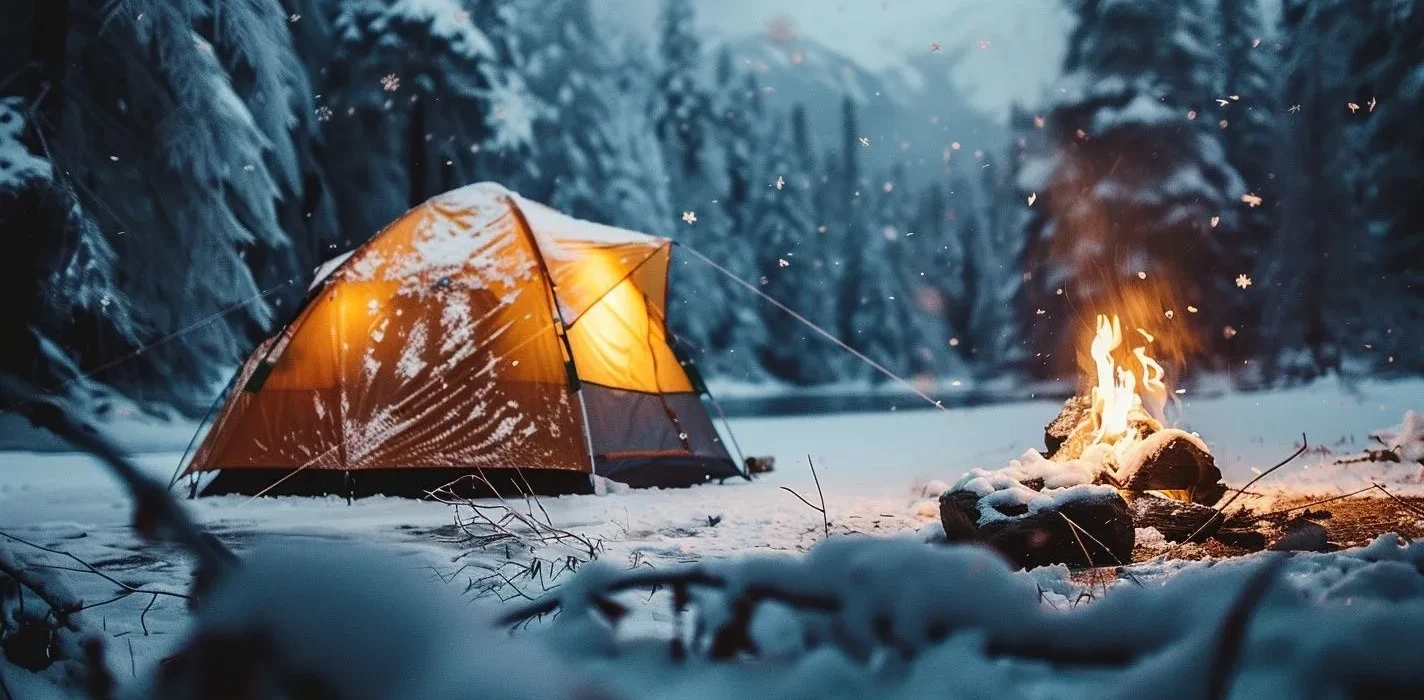
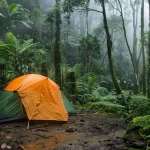
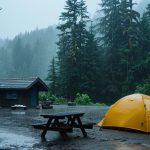
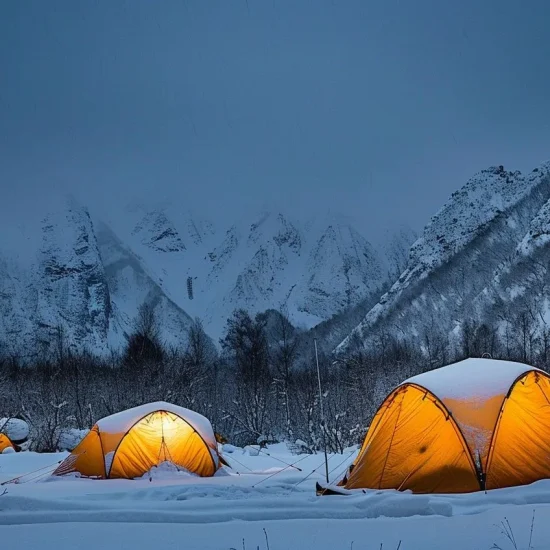

No Comment! Be the first one.